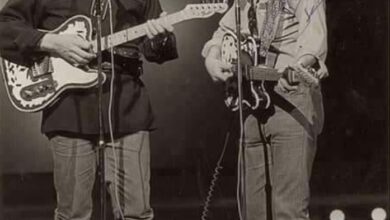Lionel Richie’s Powerful “I Am…I Said” Display Touches Neil Diamond and Meryl Streep
Lionel Richie’s performance of “I Am…I Said” at the 2011 Kennedy Center Honors marked a significant moment that brought together artistry, emotion, and respect for musical heritage. This event was dedicated to the illustrious Neil Diamond, a songwriter whose influence stretches across the decades and has left an indelible mark on the landscape of popular music. Richie’s appearance was not simply a musical act; rather, it was a heartfelt tribute that underscored the deep reverence and connection that artists share when acknowledging the legacy of their peers.
“I Am…I Said,” originally released in 1971 on Diamond’s album “Stones,” is regarded as one of his most introspective songs, beautifully encapsulating feelings of isolation and the quest for one’s identity—an exploration of the human condition that resonates universally. The lyrical depth of the song invites listeners to reflect on their own lives, intertwining personal narratives with larger, shared experiences. Richie’s rendition brought forth a fresh interpretation while honoring the original, imbuing it with emotional resonance that spoke to the audience’s hearts.
Lionel Richie’s own artistic journey began with The Commodores, a band that expertly combined elements of R&B, soul, and funk. Emerging as a solo artist, Richie showcased his versatility with iconic hits that seamlessly crossed genres, appealing to audiences worldwide. The connection between Richie and Diamond is notable, as both artists have skillfully captured the emotions of their listeners through storytelling and melodic compositions. By delivering a tribute through one of Diamond’s signature songs, Richie not only celebrated Diamond’s achievements but also reinforced the notion that music is a continuum, where artists inspire and build upon each other’s legacies.
One remarkable aspect of Richie’s performance was his decision to personalize the lyrics, alluding to his hometown of Tuskegee, Alabama. This creative choice highlighted the ways in which music can serve as a canvas for personal expression while maintaining a universal appeal. It demonstrated how songs, while rooted in specific experiences, can evoke feelings and memories that transcend individual narratives, uniting diverse audiences through shared emotions and life experiences.
The Kennedy Center Honors is emblematic of America’s rich cultural tapestry, celebrating luminaries who have made significant contributions to the performing arts. The 2011 ceremony was a gathering of talent, emotion, and mutual respect as artists came together to honor Neil Diamond. Richie’s performance stood out in this celebratory atmosphere, amplifying feelings of nostalgia and admiration, as all present recognized the significance of the moment. The ceremony not only served as an accolade for Diamond but also as a reminder of the powerful bonds forged through music.
Witnessing the audience’s response was a testament to the impact of Richie’s tribute. Individuals from various walks of life, including luminaries such as Meryl Streep, were visibly moved, illustrating the universal nature of emotional resonance in music. This moment reflected the ability of live performances to evoke collective memories and feelings, emphasizing how artists can create spaces of connection and empathy for all who listen.
In the years following the ceremony, both Lionel Richie and Neil Diamond continued to engage their audiences, leaving a lasting imprint on the music world. Although Diamond chose to retire from touring in 2018, his songs remain timeless classics that people cherish and sing along to. Meanwhile, Richie has retained a vibrant presence in the industry, demonstrating his commitment to nurturing new talent. His role as a mentor on shows such as “American Idol” embodies the essential practice of transmitting musical knowledge and passion to the next generation, ensuring that the rich traditions of storytelling in music endure.
Lionel Richie’s influence transcends the realm of performance; it also lies in his ability to initiate meaningful dialogues through music. He embodies both the role of an artist and that of a custodian of musical heritage, bridging the gap between eras and styles. His interpretation of classic songs not only captivates audiences but also reminds artists of their responsibilities to their craft and the future of music.
Reflecting on the performance at the Kennedy Center, it’s clear that moments like these encapsulate the transformative power of music. They underline that performances are not merely about entertainment but rather about creating shared experiences. Richie’s ability to weave his personal narrative into Diamond’s poignant lyrics prompted the audience to engage on a deeper emotional level, creating a moment that was both intimate and communal.
In essence, Lionel Richie’s interpretation of “I Am…I Said” at the Kennedy Center Honors stands as a powerful embodiment of musical connection—both between the artists and with the audience. It reminds us of the ways music can forge bonds across generations, evoke emotions, and serve as a vessel for shared human experiences. This performance illustrated not only the artistry of Neil Diamond but also the exceptional talent of Lionel Richie, highlighting the enduring legacy of music as a compelling form of expression that continues to unite us all.





